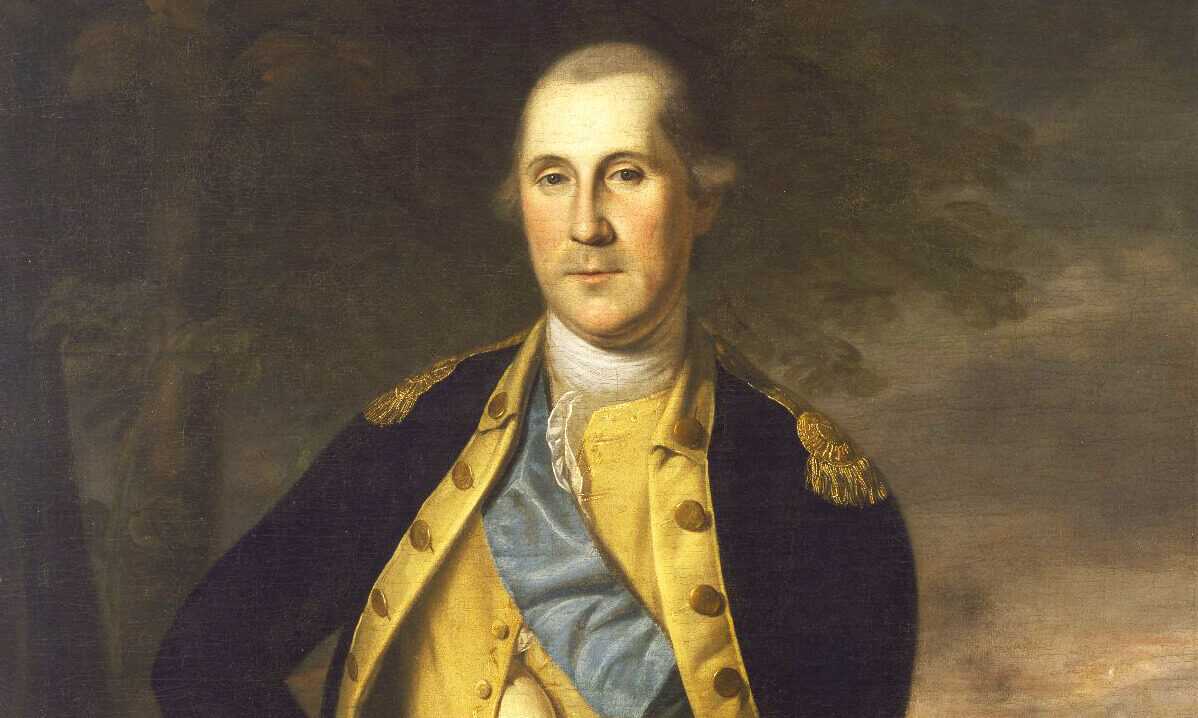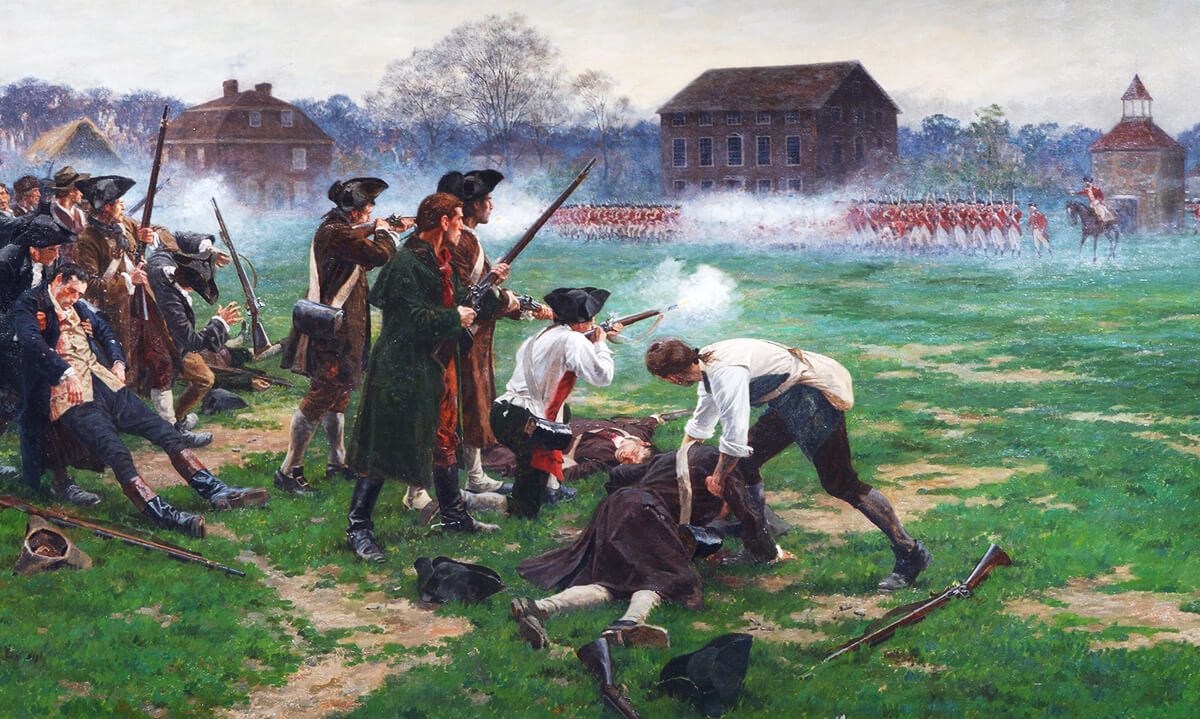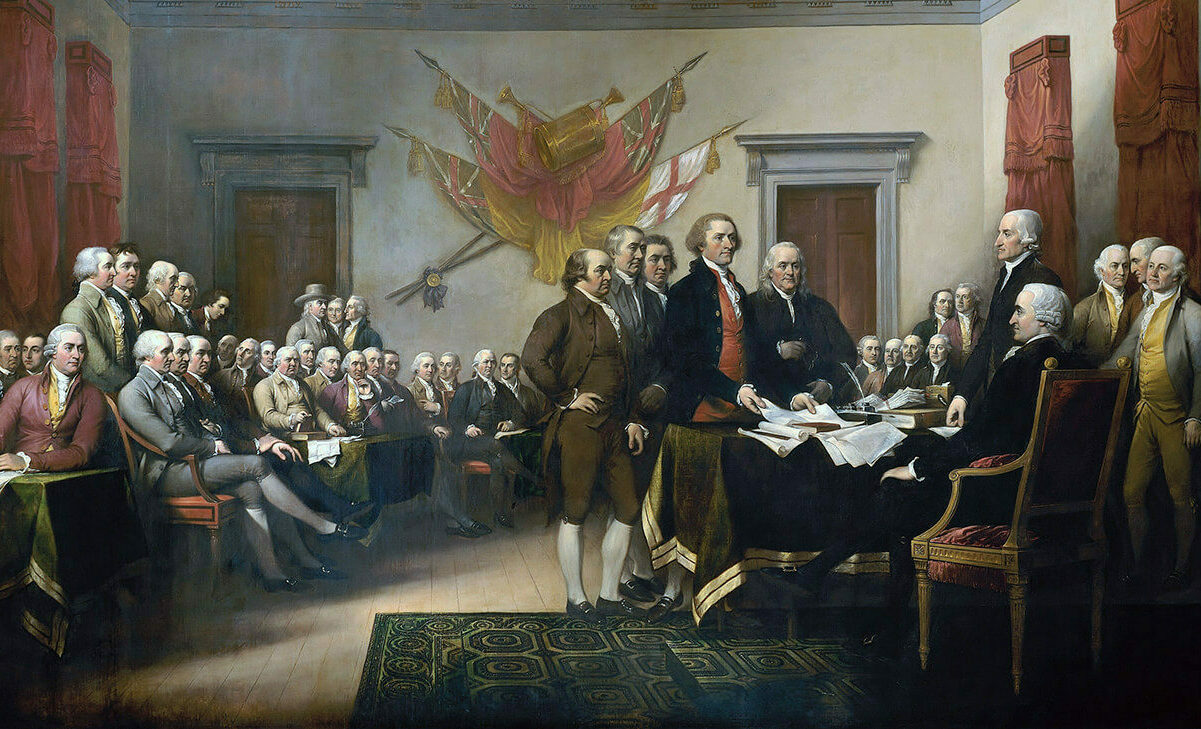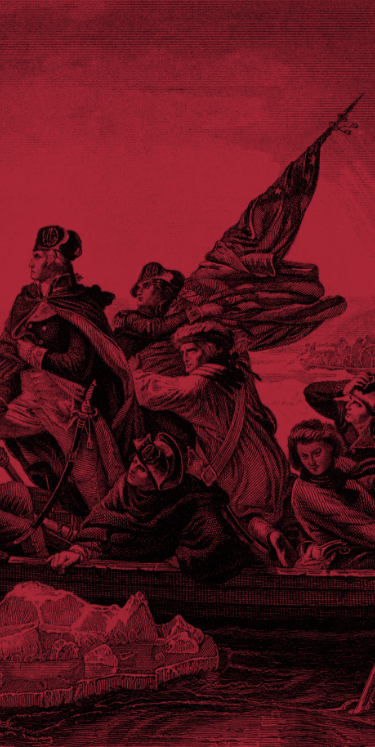Prohibiting federal courts from removing “Under God” in the Pledge
- Public support: 91%,1 thereby giving it public bi-partisan support (approximately 28% of the nation identifies as Republican, 33% as Democrat, and 38% as third-party or independent2)
- In the vote on HR 2389 (Pledge Protection Act of 2006, introduced by Rep. Todd Akin of Missouri), only 60% of House Members voted for it3– certainly much lower than the 91% of the nation that supports it
- In that vote, 96% of Republicans voted to preserve “under God” from the hands of activist judges, but only 19% of Democrats did so4
- The measure passed the House but was not taken up by Senate5
Permitting public displays of the Ten Commandments
- Public support is at 76%,6 thereby giving it public bi-partisan support
- In the vote on The Aderholt Amendment in which Rep. Robert Aderholt’s (of Alabama) bill, HR 1501, “The Ten Commandments Defense Act,” was inserted as language within another bill, only 57% of House Members voted for it7
- 93% of Republicans voted for the Ten Commandments amendment but only 27% of Democrats8
- That measure passed the House but was not taken up by Senate9
Authorizing faith-based programs
- Currently, in government-run prisons (state or federal), the average recidivism rate is 68%10 (meaning that 68% of inmates, within three years of their release from prison, will commit a crime that will place them back in prison); however, in faith-based prisons (currently operating in about a dozen states11) such as the ones in Texas, the recidivism rate is only 8%12 (a rate that is 88% lower than government-run prisons). Consider the effect of this not only in reduced spending and crime but also in strengthening the family, since an estimated 1.5 million children presently have at least one parent in prison13
- Currently, in government-run drug rehab programs (state or federal), the average cure rate is under 20%;14 however, in faith-based drug rehab programs such as Teen Challenge, the cure rate is over 70%15
- Public support for faith-based programs is at 75%,16 thereby giving it public bi-partisan support
- In the vote on HR 7 (Community Solutions Act), only 54% of House Members voted for that measure17
- 98% of Republicans voted for it but only 7% of Democrats18
- The measure passed the House but was not taken up by the Senate19
Permitting voluntary school prayer
- Public support is at 76%,20 thereby giving it public bi-partisan support
- The vote on HJ Res 78 (Community Life Amendment): only 52% of House Members voted for it21
- 87% of Republicans voted for it but only 13% of Democrats22
Defining marriage as being one man and one woman
- Opposition to same sex marriage is at 66%,23 thereby giving public bi-partisan support in support of traditional marriage
- In the Senate, on the vote to address The Federal Marriage Amendment (SJ Res 1) to define marriage as the union of a man and a woman, only 49% of Senators voted in support of that definition24
- 85% of Republican Senators voted for it but only 5% of Democratic Senators25
- In the House vote on HJ Res 88 (The Federal Marriage Amendment), only 55% of House Members voted for it26
- 87% of House Republicans voted for it but only 16% of Democrats27
Repealing the anti-family Death Tax (also called the Estate Tax, or Inheritance Tax) (see Proverbs 13:22, Ezekiel 46:18, Proverbs 19:14, I Chronicles 28:8, Ezra 9:12, etc.)
- Public opposition to the tax is 68%, thereby giving public bi-partisan support for its repeal
- In the vote on HR 8 (Estate Tax Repeal Act), only 57% of voted for its repeal28
- 96% of Republicans voted to repeal it but only 9% of Democrats29
- The measure passed the House but30 failed in the Senate31
Repealing the Marriage Penalty Tax
- Public support to repeal that anti-family policy is 80%,32 thereby giving public bi-partisan support to rid the nation of this onerous measure
- In the vote on HR 4810 (Marriage Tax Penalty Relief Act), 87% of Republicans voted for it but only 16% of Democrats voted to stop penalizing marriage33
Controlling the Supreme Court
- The Supreme Court and the federal courts in general are the primary cause for the culture war. Consider: while no legislature has passed a law permitting abortion-on-demand, it has become national policy via a Supreme Court decision;34 similarly, no legislature has prohibited voluntary school prayer but that prohibition has become national policy via Supreme Court decisions;35 the same is true on numerous other cultural issues.
- The Supreme Court’s own Justices have described the Court as “a super board of education for every school district in the nation,”36 “a national theology board,”37 and amateur psychologists on a “psycho-journey.”38 Far too many of the nation’s current policies on criminal justice, education, morality, etc., are not the result of legislative action but rather of judicial decrees.
- 77% of the nation thinks that courts have overreached in driving religion out of public life, and 59% believe that they have singled out Christianity for attack,39 thereby giving public bi-partisan support to efforts to restrain judicial activism
- Two strict-constructionists, John Roberts and Samuel Alito, were nominated to the Supreme Court as part of the effort to restrain judicial activism
- Public support for Alito’s confirmation was 54%40 and for Roberts’ was 60%,41 thereby giving them public bi-partisan support
- The vote on Alito’s confirmation was 98% of Republicans, 9% of Democrats;42 and the vote on the Roberts confirmation was 100% of Republicans, 50% of Democrats43
- Why is Congress so far out of step with the people on so many cultural issues, frequently demonstrating a level for those issues that is 20 to 30% lower than the public support?
President James A. Garfield (the 20th President, and a minister of the Gospel during the Second Great Awakening) answered this question in 1876:
“Now, more than ever before, the people are responsible for the character of their Congress. If that body be ignorant, reckless, and corrupt, it is because the people tolerate ignorance, recklessness, and corruption. If it be intelligent, brave, and pure, it is because the people demand these high qualities to represent them in the national legislature. . . . [I]f the next centennial does not find us a great nation . . . it will be because those who represent the enterprise, the culture, and the morality of the nation do not aid in controlling the political forces.”44
The Church probably better represents the “enterprise, the culture, and the morality of the nation” than any other group, but it has not “aided in controlling the political forces”
Christian voting
- There are three types of Christian voters in polling
- Christian voters – largest group; this is the group that simply self-identifies as (i.e., calls themselves) Christians
- Born-again voters – a Christian voter who says he has had a life-changing experience with Jesus Christ;45 a smaller group than that of Christian voters
- Evangelical voters – a born-again voter who also believes the Bible is important and who attends church, prays, and reads the Bible at least once a week;46 this is the group of Christians that take their faith most seriously
Christian voting patterns
- 1992-1996: a 17% decrease in Christians who voted
- 1996-2000: an additional 23% decrease in Christians who voted
- 1992-2000: a 40% total decrease in Christians who voted
- There are 60 million evangelicals in America47
- Only 15 million evangelicals voted in 200048
- Some 24 million (40%) evangelicals are not even registered to vote49
2002 efforts
- In the 2002 election, following the dramatic drop in 1992-2000, national evangelical leaders widely urged Christians to register, vote, and vote their values
- The national efforts resulted in 2% increase in Christian voter turnout
- Even that percentage resulted in dramatic improvements, which were visible in exit polling on the abortion issue
- 41% of all voters said the abortion issue impacted their vote
- 23% said they voted a straight pro-life ticket
- 16% said they voted a straight pro-abortion ticket
- This resulted in a 7% advantage for a pro-life candidate (it had been some years since most federal candidates had an advantage by being openly pro-life50)
- The results were visible in those elected to Congress
- Of the 54 Freshmen elected to the U. S. House, 36 were pro-life – a 67% pro-life class51 (anything over 50.1% is moving forward)
- Of 10 Freshmen elected to the U. S. Senate, 8 were pro-life – an 80% pro-life class52 (the Senate is where the help is most needed)
Legislative impact
- Based on the logic of President Garfield (as well as that of Proverbs 29:2), if pro-life voters elect pro-life legislators, the logical result would be that they would begin to get pro-life legislation
- Since the Roe v. Wade Court decision in 1973, Congress had not reduced the scope of abortions or the type of abortions performed but instead restricted only money
- Congress regularly defeats the Sanchez Amendment that would fund abortions on military bases53
- Congress regularly enacts the Hyde Amendment that prohibits federal funds from being used for abortions54
- Congress regularly enacts the Mexico City policy that prohibits foreign aid monies from going to groups that perform abortions overseas55
- The 2002 Congress became the first to pass not just one but three bills that protected unborn human life; all three were signed by President Bush
- Infant Born-Alive Protection Act56
- Unborn Victims of Violence Act57
- Partial-Birth Abortion Ban58
2004 efforts
- National evangelical leaders continued to widely urge voter registration, voter turnout, and Christians voting their values59
- Those efforts resulted in a 93% increase in Christian voter turnout (28.9 million evangelicals voted,60 up 93% from the 15 million that voted in 2000; of course, 28.9 million of the 60 million still means that under half of evangelicals are voting, but this still is a dramatic increase over 2000)
- The effect was reflected in exit polling on the abortion issue
- 42% of all voters said the abortion issue impacted their vote61
- 25% said they voted a straight pro-life ticket62
- 13% said they voted a straight pro-abortion ticket63
- This resulted in a 12% advantage for pro-life candidates
- The results were visible in those elected to Congress
- Of 40 Freshmen elected to the U. S. House, 25 were pro-life64 (a 63% pro-life class)
- Of 9 Freshmen elected to the U. S. Senate, 7 were pro-life65 (a 77% pro-life class)
Overall effects of these two elections
- Not only have a number of pro-life, pro-faith, and pro-family legislators been elected to Congress, but the change has been especially visible in the Senate
- Over these two elections, of the 19 Freshman Senators elected, 15 have been pro-life – a 79% pro-life group
- It has been the addition of these new pro-life Senators that has allowed the confirmation of two new pro-life Justices to the U. S. Supreme Court – something that likely would not have happened had not Christians showed up in the past two election cycles and voted their values
- Those two new Justices have already had a significant impact on a number of Biblical and pro-family issues, including a pro-life Court ruling that ended a 1981 policy wrongly used to prosecute pro-life protestors,66 upholding the ban on partial-birth abortions,67 a refusal to hear a challenge to the Defense of Marriage Act (a federal law defining marriage as being the union of a man and a woman for federal purpose),68 and a decision to uphold a public display of the Ten Commandments69– the Court’s first favorable ruling on such displays in 27 years
- Only one more such Justice is needed to place five solid votes on the Court, thus potentially ending the federal control of the culture war and returning it back to the people, where they can direct it through their elected officials
2006 voting efforts
- There was a 30% decrease in Christian voter turnout, falling from 28.9 million evangelicals down to 20.5 million70
- The result was clearly visible in the philosophy of those elected to Congress
- Of 54 Freshmen elected to the U. S. House, only 17 were pro-life71 (a 31% pro-life class)
- Of 10 Freshmen elected to the U. S. Senate,72 only 1 was pro-life (a 10% pro-life class), and one of those two will not vote for marriage as being only between a man and a woman
- The Baltimore Sun described this Congress as “the most pro-choice Congress in the history of the Republic”73
- Just as Christian voter turnout directly affects policies on life issues, so, too, on issues related to slowing the promotion of the homosexual agenda
- The 2006 Congress has been active in promoting the homosexual agenda through its onerous homosexual hate-crimes bill as well as the Employment Non-Discrimination Act that would force employers, including churches, to hire homosexuals
- While Evangelical voting turnout reaches only at 50% when at its highest, homosexual men vote at a rate of 92.5% and lesbian women at a rate of 91%74
- Clearly, there is a direct correlation between Christian voter turnout and the percentage of elected leaders who embrace and reflect basic Biblical values
Challenges for Christian voter involvement
- The Rev. Matthias Burnet (1803)
Finally, ye . . . whose high prerogative it is to . . . invest with office an authority or to withhold them and in whose power it is to save or destroy your country, consider well the important trust . . . which God . . . [has] put into your hands. To God and posterity you are accountable for them. . . . Let not your children have reason to curse you for giving up those rights and prostrating those institutions which your fathers delivered to you.75
- The Rev. Charles Finney (1830s)
The Church must take right ground in regard to politics. . . . [T]he time has come that Christians must vote for honest men and take consistent ground in politics. . . . Christians have been exceedingly guilty in this matter. But the time has come when they must act differently. . . . God cannot sustain this free and blessed country which we love and pray for unless the Church will take right ground. . . . It seems sometimes as if the foundations of the nation are becoming rotten, and Christians seem to act as if they think God does not see what they do in politics. But I tell you He does see it, and He will bless or curse this nation according to the course [Christians] take [in politics].76
- The Rev. Frederick Douglass (1852)
[I] have one great political idea. . . . That idea is an old one. It is widely and generally assented to; nevertheless, it is very generally trampled upon and disregarded. The best expression of it, I have found in the Bible. It is in substance, “Righteousness exalteth a nation; sin is a reproach to any people” [Proverbs 14:34]. . . This constitutes my politics – the negative and positive of my politics, and the whole of my politics. . . . I feel it my duty to do all in my power to infuse this idea into the public mind, that it may speedily be recognized and practiced upon by our people.77
- The Rev. Francis Grimke (1909)
The Stars and Stripes – the old flag – will float . . . over all these States. . . If the time ever comes when we shall go to pieces, it will . . . be . . . from inward corruption – from the disregard of right principles . . . from losing sight of the fact that “Righteousness exalteth a nation, but that sin is a reproach to any people” [Proverbs 14:34]. . . . [T]he secession of the Southern States in 1860 was a small matter compared with the secession of the Union itself from the great principles enunciated in the Declaration of Independence, in the Golden Rule, in the Ten Commandments, in the Sermon on the Mount. Unless we hold, and hold firmly to these great fundamental principles of righteousness, . . . our Union . . . will be “only a covenant with death and an agreement with hell.” If it continues to exist, it will be a curse and not a blessing.78
WallBuilders Resources
- Original Intent: The Court, The Constitution, and Religion
- The Role of Pastors and Christians in Civil Government
- The WallBuilder Report, Winter 2005, “Inside Election 2004: A Moral Mandate?”
Endnotes
1 Gallup, “Americans Indivisible on Pledge of Allegiance” (at: https://www.gallup.com/poll/11551/Americans-Indivisible-Pledge-Allegiance.aspx).
2 Gallup, “Party Affiliation” (at https://www.gallup.com/poll/15370/Party-Affiliation.aspx).
3 Library of Congress, “Final Vote Results for Roll Call 385” (at: https://clerk.house.gov/evs/2006/roll385.xml), GovTrack.us, “H.R. 2389 [109th]: Pledge Protection Act of 2005” (at https://www.govtrack.us/congress/vote.xpd?vote=h2006-385).
4 Library of Congress, “Final Vote Results for Roll Call 385” (at: https://clerk.house.gov/evs/2006/roll385.xml), GovTrack.us, “H.R. 2389 [109th]: Pledge Protection Act of 2005” (at: https://www.govtrack.us/congress/vote.xpd?vote=h2006-385).
5 Library of Congress, “H.R. 2389” (at: https://thomas.loc.gov/cgi-bin/bdquery/z?d109:HR02389:@@@L&summ2=m&), GovTrack.us, “H.R. 2389 [109th]: Pledge Protection Act of 2005” (at: https://www.govtrack.us/congress/bill.xpd?bill=h109-2389).
6 See for example: Gallup, “Americans: Thou Shalt Not Remove the Ten Commandments” (at: https://www.gallup.com/poll/15817/Americans-Thou-Shalt-Remove-Ten-Commandments.aspx).
7 Library of Congress, “Final Vote Results for Roll Call 221: Aderholt of Alabama Amendment” (at: https://clerk.house.gov/evs/1999/roll221.xml).
8 Library of Congress, “Final Vote Results for Roll Call 221: Aderholt of Alabama Amendment” (at: https://clerk.house.gov/evs/1999/roll221.xml).
9 Library of Congress, “H.R. 1501: H.AMDT.200” (at: https://thomas.loc.gov/cgi-bin/bdquery/z?d106:HR01501:@@@S).
10 U.S. Department of Justice, “Criminal Offenders Statistics” (at: https://www.ojp.usdoj.gov/bjs/crimoff.htm#recidivism).
11 FoxNews.com, “Faith-Based Prisons Multiply Across U.S.” (at: https://www.foxnews.com/story/0,2933,301600,00.html).
12 The Roundtable on Religion & Social Welfare Policy, “Unresolved Problem- Interview with Rob Boston, Mark Earley” (at: https://www.religionandsocialpolicy.org/news/article.cfm?id=423).
13 University of Pennsylvania, “Fathers in Prison: A Review of the Data” (at: https://www.ncoff.gse.upenn.edu/briefs/brennerbrief.pdf), California State Library, “Children of Incarcerated Parents” (at: https://www.library.ca.gov/crb/00/notes/V7N2.pdf).
14 Mackinac Center for Public Policy, “Teen Challenge: Kicking Two Bad Habits” (at: https://www.mackinac.org/article.asp?ID=56).
15 “Statement of the Dave Batty, Executive Director, Teen Challenge, Inc., Brooklyn, New York. Testimony Before the Subcommittee on Human Resources of the House Committee on Ways and Means,” 3.
16 PewForum, “Report: Faith-Based Funding Backed, but Church-State Doubt Abound” (at: https://pewforum.org/events/0410/report/).
17 Library of Congress, “Final Vote Results for Roll Call 254: HR 7” (at: https://clerk.house.gov/evs/2001/roll254.xml).
18 Library of Congress, “Final Vote Results for Roll Call 254: HR 7” (at: https://clerk.house.gov/evs/2001/roll254.xml).
19 Library of Congress, “HR 7: All Actions” (at: https://thomas.loc.gov/cgi-bin/bdquery/z?d107:HR00007:@@@X).
20 Gallup, “Public Favors Voluntary Prayer for Schools” (at: https://www.gallup.com/poll/18136/Public-Favors-Voluntary-Prayer-Public-Schools.aspx), August 26, 2005; Gallup, “Education: Topics A to Z” (at: https://www.gallup.com/poll/1612/Education.aspx).
21 Library of Congress, “HJ Res 78” (at: https://thomas.loc.gov/cgi-bin/bdquery/z?d105:HJ00078:@@@X), Library of Congress, “Final Results for Roll Call 201: HJ Res 78” (at: https://clerk.house.gov/evs/1998/roll201.xml).
22 Library of Congress, “Final Vote Results for Roll Call 201: HJ Res 78” (at: https://clerk.house.gov/evs/1998/roll201.xml).
23 Fox News Poll, June 18, 2004 (at: https://www.foxnews.com/story/0,2933,103756,00.html).
24 Library of Congress, “S.J. Res. 1” (at: https://thomas.loc.gov/cgi-bin/bdquery/z?d109:SJ00001:@@@X), GovTrack.us, “S.J. Res. 1 [109th]: Marriage Protection Amendment” (at: https://www.govtrack.us/congress/bill.xpd?bill=sj109-1).
25 Library of Congress, “U.S. Senate Roll Call Votes 109th Congress- 2nd Session” (at: https://www.senate.gov/legislative/LIS/roll_call_lists/roll_call_vote_cfm.cfm?congress=109&session=2&vote=00163), GovTrack.us, “Senate Vote #163 (Jun 7, 2006)” (at: https://www.govtrack.us/congress/vote.xpd?vote=s2006-163).
26 Library of Congress, “H.J. Res. 88” (at: https://thomas.loc.gov/cgi-bin/bdquery/z?d109:HJ00088:@@@X), GovTrack.us, “H.J. Res. 88 [109th]: Marriage Protection Amendment” (at: https://www.govtrack.us/congress/bill.xpd?bill=hj109-88).
27 Library of Congress, “Final Vote Results for Roll Call 378” (at: https://clerk.house.gov/evs/2006/roll378.xml), GovTrack.us, “H.J. Res. 88 [109th]: Marriage Protection Amendment (Vote on Passage)” (at: https://www.govtrack.us/congress/vote.xpd?vote=h2006-378).
28 Library of Congress, “H.R. 8” (at https://thomas.loc.gov/cgi-bin/bdquery/z?d109:HR00008:@@@X), Library of Congress, “U.S. Senate Roll Call Votes 109th Congress-2nd Session: H.R. 8” (at: https://www.senate.gov/legislative/LIS/roll_call_lists/roll_call_vote_cfm.cfm?congress=109&session=2&vote=00164).
29 Library of Congress, “U.S. Senate Roll Call Votes 109th Congress-2nd Session: H.R. 8” (at: https://www.senate.gov/legislative/LIS/roll_call_lists/roll_call_vote_cfm.cfm?congress=109&session=2&vote=00164).
30 Library of Congress, “H.R. 8” (at: https://thomas.loc.gov/cgi-bin/bdquery/z?d109:HR00008:@@@X).
31 Library of Congress, “H.R. 8” (at: https://thomas.loc.gov/cgi-bin/bdquery/z?d109:HR00008:@@@X), Library of Congress, “U.S. Senate Roll Call Votes 109th Congress-2nd Session: H.R. 8” (at: https://www.senate.gov/legislative/LIS/roll_call_lists/roll_call_vote_cfm.cfm?congress=109&session=2&vote=00164).
32 Gallup, “Broad Public Support for Variety of Economic Stimulus Proposals” (at: https://www.gallup.com/poll/7549/Broad-Public-Support-Variety-Economic-Stimulus-Proposals.aspx), January 8, 2003; see also Pew Research Center, “Public Votes for Continuity and Change in 2000” (at: https://people-press.org/reports/print.php3?PageID=330), February 25, 1999.
33 Library of Congress, “U.S. Senate Roll Call Votes 106th Congress- 2nd Session” (at: https://www.senate.gov/legislative/LIS/roll_call_lists/roll_call_vote_cfm.cfm?congress=106&session=2&vote=00226).
34 Roe v. Wade, 410 U.S. 113 (1973).
35 See for example Engel v. Vitale, 370 U.S. 421 (1962), Wallace v. Jaffree, 472 U.S. 38 (1985).
36 McCollum v. Board of Education, 333 U. S. 203, 237 (1948).
37 County of Allegheny v. American Civil Liberties Union, 106 L. Ed. 2d 472, 550 (1989), Kennedy, J. (concurring in the judgment in part and dissenting in part).
38 Lee et al. v. Weisman, 505 U.S. 577, 643 (1992).
39 Foxnews.com, “Courts Driving Religion Out of Public Life; Christianity Under Attack” (at: https://www.foxnews.com/story/0,2933,177355,00.html); see also CNSNews.com, “Most Americans Feel Religion Is ‘Under Attack,’ Poll Shows” (at: https://www.csnews.com/ViewCulture.asp?Page=Culturearchive200511CUL20051121a.html).
40 CNN-USA Today-Gallup Poll reported on January 23, 2006 (at: https://www.usatoday.com/news/washington/2006-01-23-alito-senate_x.htm).
41 CNN-USA Today-Gallup Poll reported on January 19, 2005 (at: https://www.cnn.com/2005/POLITICS/09/19/bush.poll/index.html).
42 United States Senate, “U.S. Senate Roll Call Votes 109th Congress-2nd Session” (at: https://www.senate.gov/legislative/LIS/roll_call_lists/roll_call_vote_cfm.cfm?congress=109&session=2&vote=00002).
43 United States Senate, “U.S. Senate Roll Call Votes 109th Congress-1st Session” (at: https://www.senate.gov/legislative/LIS/roll_call_lists/roll_call_vote_cfm.cfm?congress=109&session=1&vote=00245).
44 John M. Taylor, Garfield of Ohio: The Available Man (New York: W. W. Norton and Company, Inc., 1970), p. 180, quoted from “A Century of Congress,” by James A. Garfield, Atlantic, July 1877.
45 Barna Group, “Born Again Christians” (at: https://www.barna.org/FlexPage.aspx?Page=Topic&TopicID=8).
46 Wheaton College, “Defining Evangelicalism” (at: https://www.wheaton.edu/isae/defining_evangelicalism.html).
47 The Boston Globe, “Apocalyptic President?” (at: https://www.boston.com/news/globe/ideas/articles/2004/04/04/apocalyptic_president/?page=3); Reuters, “U.S. Evangelicals Eye Renewed Domestic Drive” (at: https://www.reuters.com/article/domesticNews/idUSN0741145420070207);
48 Focus on the Family, Citizen Magazine, September 2003, “Believers at the ballot box: Election 2000 by the numbers.”
49 Operation Vote.com, “More Ways Churches Can Get Involved” (at: www.kintera.org/atf/cf/%7BBA59548B-F8D6-416E-86A7-3BF0226F8467%7D/AF104-%20Planning%20Points.pdf); Summit Ministries, “Why Christians Should Vote” (at: https://summit.org/resource/tc/archive/1004/).
50 National Right to Life, “The Pro-Life Advantage for Candidates” (at: https://www.nrlc.org/EandP/profileadvantage.html).
51 Numbers provided by the House Pro-Life Caucus.
52 Statement of Carol Tobias, National Right to Life PAC Director, Post Election Press Conference, November 13, 2002, (at: http//www.nrlc.org/Election2002/tobiaspressconference111302.html).
53 American Family Association, “Loretta Sanchez of California Amendment; National Defense Authorization Act for Fiscal Year 2004,” (at: ); University of Maryland, “CRS Report for Congress: Abortion Services and Military Medical Facilities” (at: https:// www.law.umaryland.edu/marshall/crsreports/crsdocuments/95-387_F.pdf), 17-18.
54 National Women’s Health Network, “The Women’s Health Activist: The Hyde Amendment’s Prohibition of Federal Funding for Abortion- 30 Years is Enough!”; National Committee for a Human Life Amendment, “The Hyde Amendment: Fact Sheet” (at: www.nchla.org/datasource/ifactsheets/hyde8b.00.PDF).
55 Ontario Consultants on Religious Tolerance, “US ‘Mexico’ policy: Abortion funding in foreign countries,” last updated April 27, 2007 (at: https://www.religioustolerance.org/abo_wrld.htm).
56 National Right to Life, “President Bush Signs Born Alive Infants Protection Act in Pittsburgh Ceremony Attended by NRLC Officials,” (at: https://www.nrlc.org/Federal/Born_Alive_Infants/BAIPAsigned.html).
57 National Right to Life, “ President Bush Signs Unborn Victims of Violence Act into Law, After Dramatic One-vote Win in Senate,” April 6, 2004 (at: https://ww.nrlc.org/Unborn_Victims/BshsignsUVVA.html).
58 Office of the Press Secretary, “President Signs Partial-Birth Abortion Ban Act of 2003,” November 5, 2003 (at: https://www.whitehouse.gov/news/releases/2003/11/20031105-1.html).
59 Washington Post, “Evangelical Leaders Appeal to Followers to Go to Polls,” October 15, 2004, p. A06; see also Washington Post, “Evangelicals Say They Led Charge for the GOP” (at: https://www.washingtonpost.com/wp-dyn/articles/A32793-2004Nov7.html).
60 In the 2004 elections, a total of 125,736,000 votes were cast; twenty-three percent of voters were “Evangelicals,” thus translating into 28.9 million votes. See sources at New York Times, “Religious Voting Data Show Some Shift, Observers Say,” (at: https://select.nytimes.com/gst/abstract.html?res=F50F17F7355B0C7A8CDDA80994DE404482&n=Top%2fReference%2fTimes%20Topics%2fSubjects%2fE%2fEvangelical%20Movement); and U. S. Census Bureau, “Voting and Registration in the Election of November 2004” (at: https://www.census.gov/prod/2006pubs/p20-556.pdf).
61 National Right to Life, “Statement by Carol Tobias: National Right to Life Political Director, November 4, 2004” (at: https://www.nrlc.org/Post/Tobias110404.html).
62 National Right to Life, “Statement by Carol Tobias: National Right to Life Political Director, November 4, 2004” (at: https://www.nrlc.org/Post/Tobias110404.html).
63 National Right to Life, “Statement by Carol Tobias: National Right to Life Political Director, November 4, 2004” (at: https://www.nrlc.org/Post/Tobias110404.html).
64 Numbers provided by the House Pro-Life Caucus.
65 National Right to Life, “Statement by Carol Tobias: National Right to Life Political Director, November 4, 2004” (at: https://www.nrlc.org/Post/Tobias110404.html), Library of Congress, “CRS Report for Congress: Freshmen in the House of Representatives and Senate by Political Party: 1913-2005” (at: www.llsdc.org/sourcebook/docs/CRS-RS20723.pdf).
66 NOW v. Scheidler, 547 U.S. ___ (2006).
67 Gonzales v. Carhart, 550 U.S. ___ (2007).
68 Smelt v. County of Orange, 374 F. Supp. 2d 861 (C.D. Cal., 2005), aff’d in part and rev’d in part, 447 F.3d 673 (9th Cir. 2006), cert. denied, 127 S. Ct. 396 (2006).
69 Van Orden v. Perry, 545 U.S. 677 (2005).
70 In the 2006 elections, a total of 85,251,089 votes were cast; twenty-four percent of voters were “Evangelicals,” thus translating into 20.5 million votes. See sources at George Mason University, “United States Elections Project: 2006 Voting-Age and Voting-Eligible Population Estimates” (at: https://elections.gmu.edu/Voter_Turnout_2006.htm); New York Times, “Religious Voting Data Show Some Shift, Observers Say” (at: https://select.nytimes.com/gst/abstract.html?res=F50F17F7355B0C7A8CDDA80994DE404482&n=Top%2fReference%2fTimes%20Topics%2fSubjects%2fE%2fEvangelical%20Movement).
71 Numbers provided by the House Pro-Life Caucus.
72 See for example: Wikipedia.com, “List of Freshmen Class Members of the 110th United States Congress” (at: https://en.wikipedia.org/wiki/List_of_freshman_class_members_of_the_110th_United_States_Congress).
73 Thomas F. Shaller, Baltimore Sun, February 28, 2007 (at: https://www.sba-list.org/newsitems.aspx).
74 Numbers from a study by San Francisco-based Community Marketing, Inc. reported in the Los Angeles Times online blog on August 8, 2007 (at: https://latimesblogs.latimes.com/washington/2007/08/gay-power.html).
75 Matthias Burnet, An Election Sermon, Preached at Hartford, on the Day of the Anniversary Election, May 12, 1803 (Hartford: Hudson and Goodwin, 1803), 26-27.
76 Charles G. Finney, Lectures on Revivals of Religion (New York: Fleming H. Revell Company, 1868, first published in 1835), Lecture XV, 281-282.
77 Douglass, The Frederick Douglass Papers, (New Haven: Yale University Press, 1982), 2:397, from a speech delivered at Ithaca, New York, October 14, 1852.
78 Francis J. Grimke, from “Equality of Right for All Citizens, Black and White, Alike,” March 7, 1909, published in Masterpieces of Negro Eloquence, Alice Moore Dunbar, editor (New York: Dover Publications, Inc., 2000), 246-247.
* This article concerns a historical issue and may not have updated information.
Still looking for answers? Visit our FAQ page
More Resources
Know the Truth and Protect Your Freedoms.
Still looking for answers? Visit our FAQ page
Stay Informed with the Latest Resources
Enter your email address to receive our regular newsletter, with important information and updates right in your inbox!










